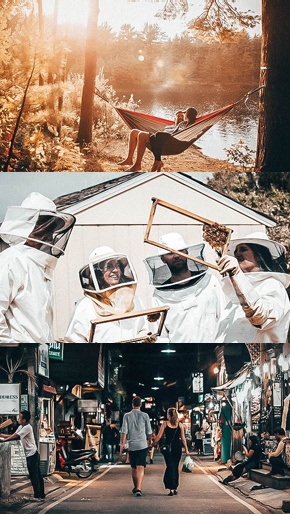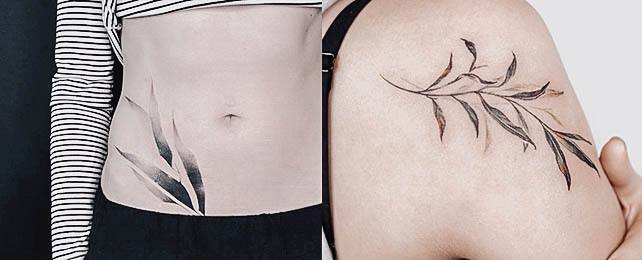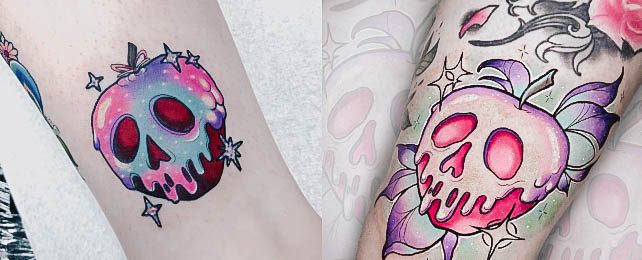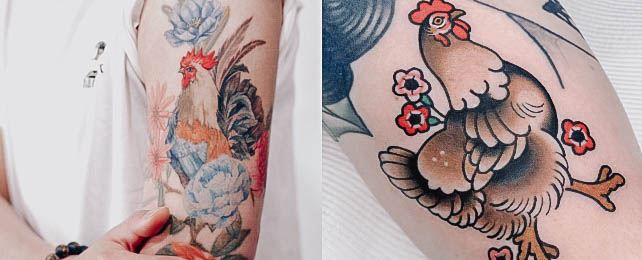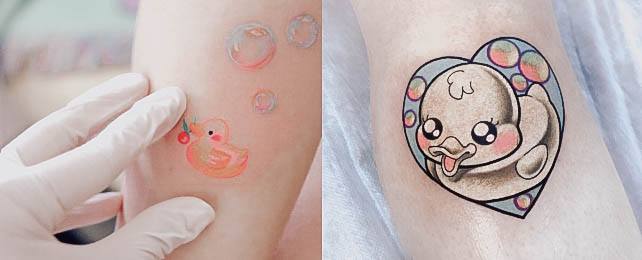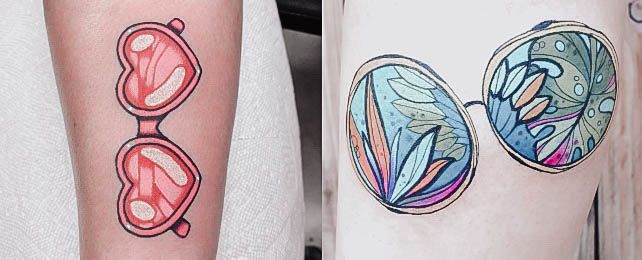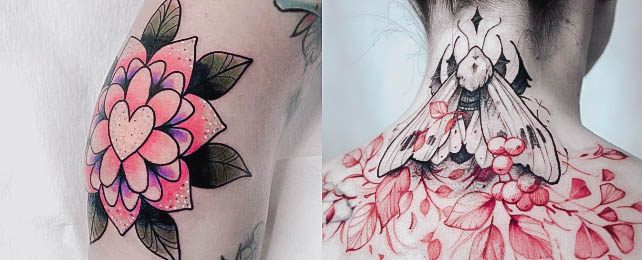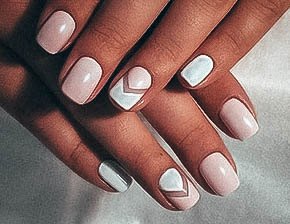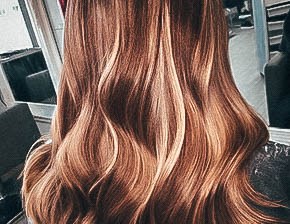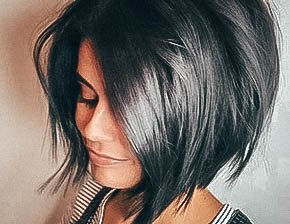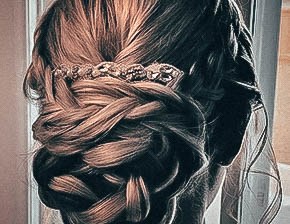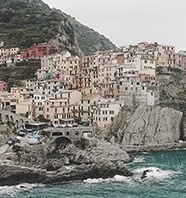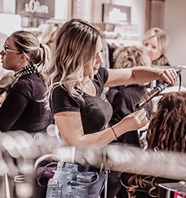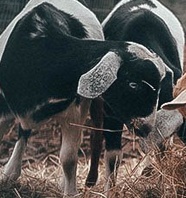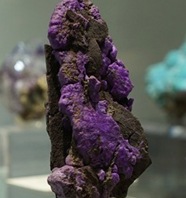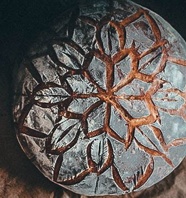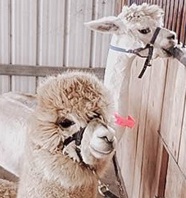Vases make a perfect tattoo design option because of their rich symbolism.
These glass and clay potter pieces can symbolize creativity, sophistication, beauty, and mystery. However, the meaning depends on the design chosen. Vases connected with flowers bring more of a romantic gesture of an individual.
Vase tattoos can take varying designs to give intended meaning. It is common to find vases at weddings, making them a perfect symbolism of “tying the knot.” An empty vessel can be a sign of simplicity and purity.
Empty vases symbolize hope. Having an empty vessel tattoo can bring out two meanings. It can either represent hope, someone awaiting good things to pour into their life, or be used as a symbol of wasted potential, showing emptiness and void within an individual.
Depending on the meaning you want to show with your vase tattoo. Broken vases symbolize good luck, grief, or sorrow, based on some beliefs. Women who wish to keep things simple should consider going for vase tattoos. However, the color selected will determine the appearance of the art.
It’s a good idea to consider drawing a vase tattoo with flowers inside to get an idea for how decorative you want to go with the vase itself, or the flower bouquet combination. Flowers are a universal symbol of love and life. The combination will give your tattoo a great look.
It is worth noting that women with a vase tattoo that incorporates flowers have a stunningly beautiful look and bring some sense of competition, calmness and love.
Which flowers should you put in your flower vase tattoo?:
1. Roses: One of the most popular flowers, roses are known for their beauty and symbolism. The rose is often seen as a symbol of love, romance, and beauty, making it one of the most sought-after flowers in the world. Roses come in a variety of colors ranging from white to pink to red and even purple. Some varieties have multiple petals while others have only one or two layers. They can be used in floral arrangements or given as gifts to express feelings of love and appreciation.
2. Tulips: Tulips are another popular flower that comes in a wide range of colors including yellow, orange, red, purple, white, and pink. This flower has long been associated with Holland due to its prevalence there but it is now grown around the world. Tulips are often used in bouquets or planted along pathways or edges due to their bright colors and varied sizes.
3. Sunflowers: Sunflowers are easily recognizable with their large yellow petals that are arranged around a central disc containing hundreds of tiny seeds. This flower is native to North America but has become widely cultivated throughout the world for its beauty and versatility in floral arrangements or home decorations. Sunflowers typically bloom during summer months and can reach heights up to 6 feet tall!
4. Lilies: Lilies come in many different shapes and sizes but they all share a similar trumpet-like shape with six petals arranged around a central bulbous center containing nectar glands which attract pollinators such as bees and butterflies. These flowers come in various shades such as white, yellow, orange, pink and purple making them perfect for any occasion!
5. Daisies: Daisies are small flowers that typically feature white petals surrounding a yellow center disc which gives them their characteristic look resembling a daisy chain necklace! These cheerful looking blooms are quite versatile since they can be used both indoors and outdoors depending on the species chosen for your garden or arrangement needs!
6. Daffodils: Daffodils are trumpet-shaped flowers that usually feature an outer layer of six colorful petals surrounding an inner cup-shaped center filled with nectar glands which attract pollinators like bees! These vibrant blooms symbolize new beginnings which make them perfect for celebrating special occasions like birthdays or anniversaries!
7. Carnations: Carnations are classic flowers that come in many different varieties featuring either single or double sets of petals ranging from reds to pinks to whites! Their fragrant scent makes them great additions to any garden as well as bouquets since they last longer than most other cut flowers when properly cared for!
8. Chrysanthemums: Chrysanthemums (or mums) are daisy-like flowers that feature multiple layers of petals surrounding a central disc filled with nectar glands which attract pollinators like butterflies! These cheerful looking blooms come in various shades such as white, yellow, orange, pink and purple making them perfect for any occasion whether it’s celebrating someone’s birthday or simply adding some color into your home decor!
9. Orchids: Orchids belong to the largest family of flowering plants known as Orchidaceae which includes over 25 thousand species worldwide! Most types have three sepals (outermost petal) surrounding three colorful petals making them some of the most beautiful blooms available today – no wonder they’re so popular among florists everywhere!
10. Alstroemeria: Alstroemeria is an exotic flower native to South America that features colorful clusters of star-shaped blossoms on each stem – hence its other common name “Peruvian Lily”! It comes in various shades including pinks, purples oranges whites & yellows giving you plenty options when selecting these delicate looking blooms for your next bouquet or arrangement project!
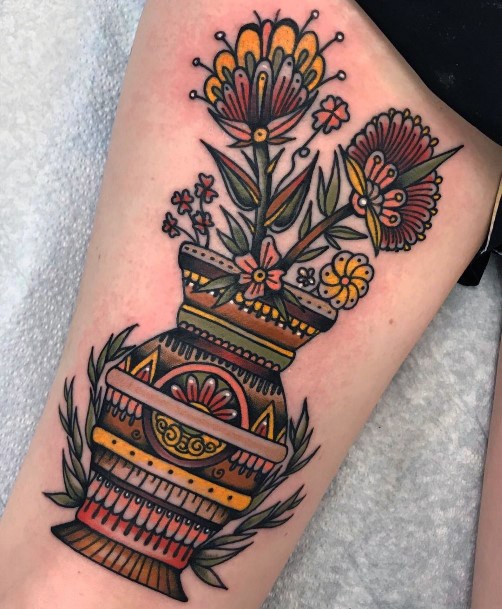
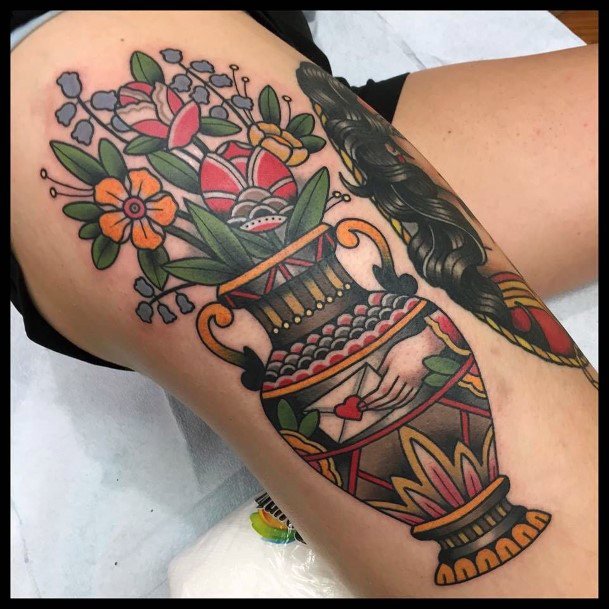
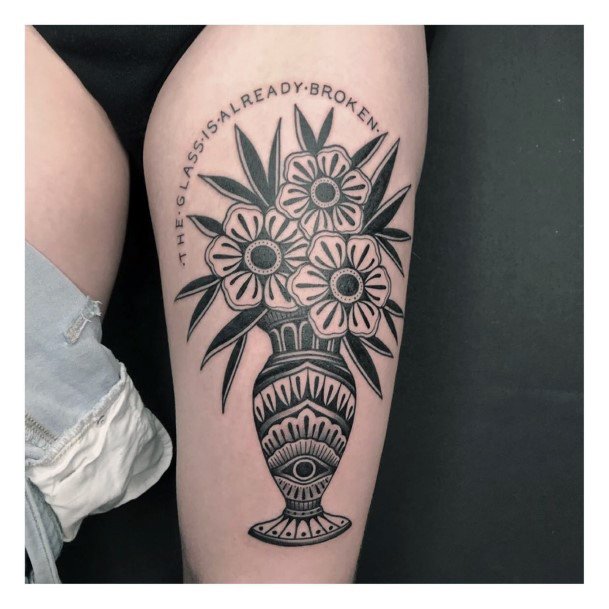
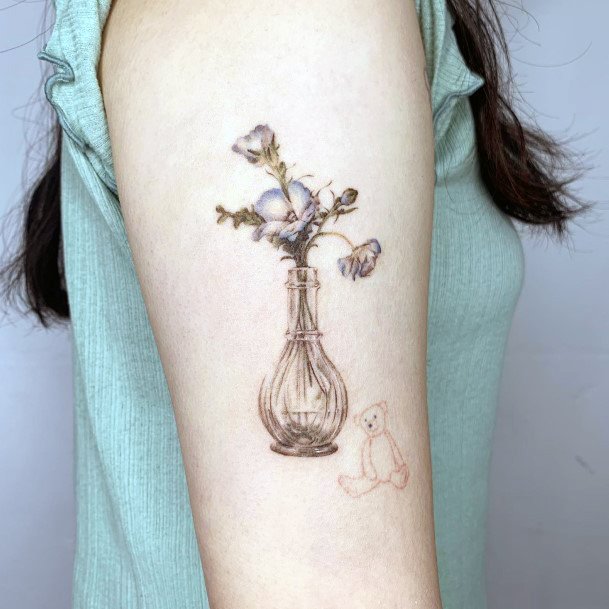
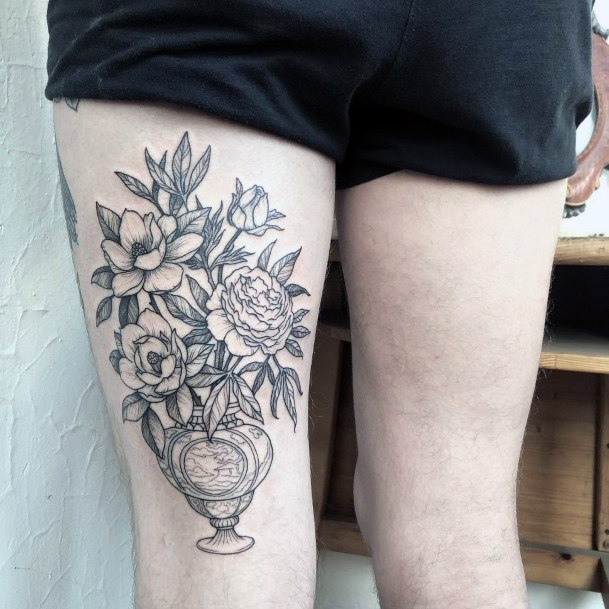
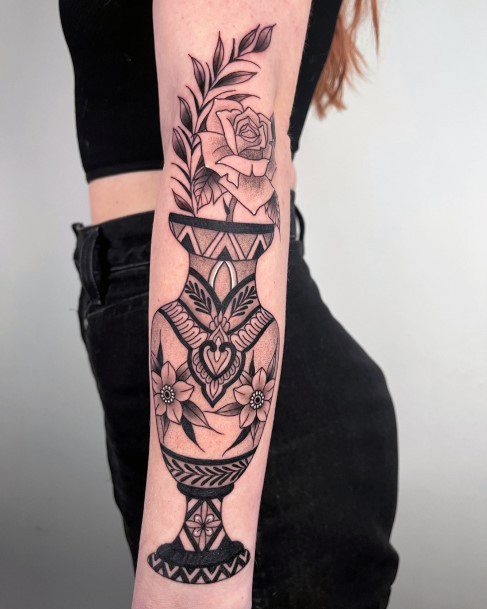
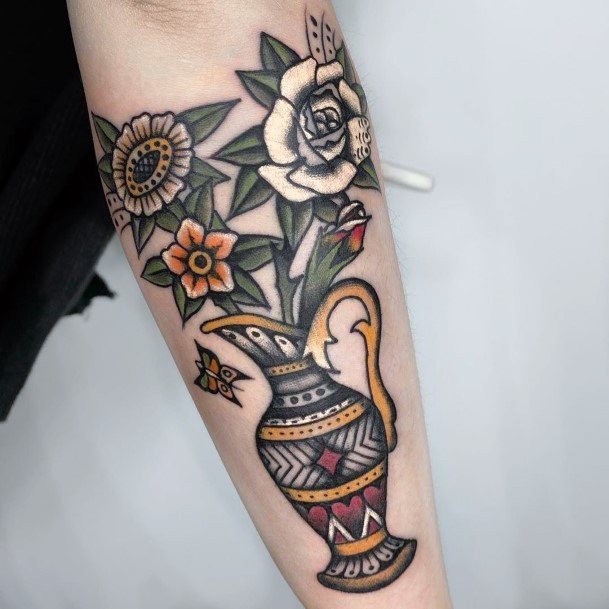

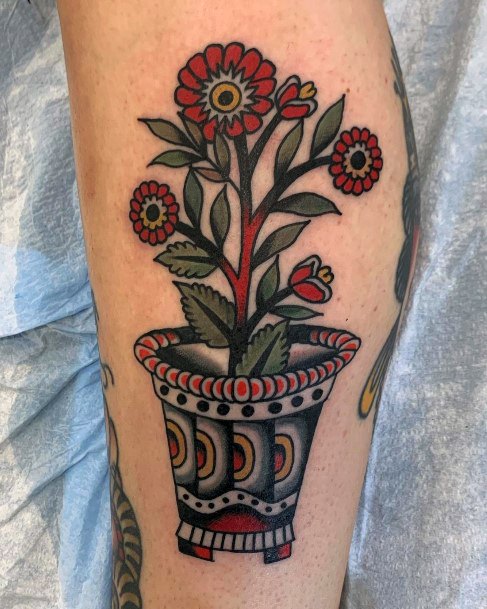
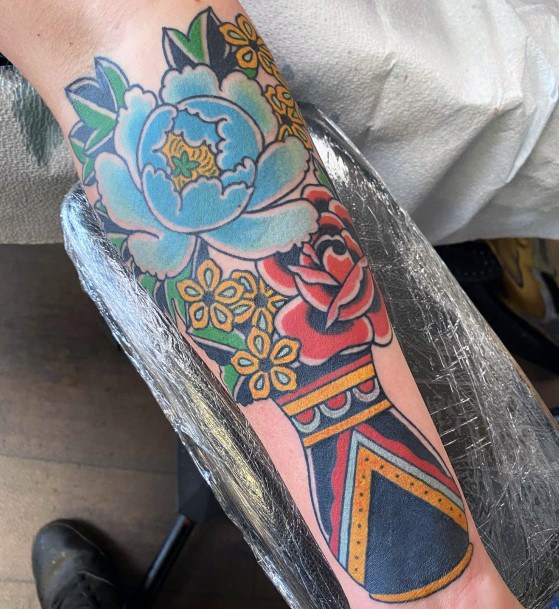

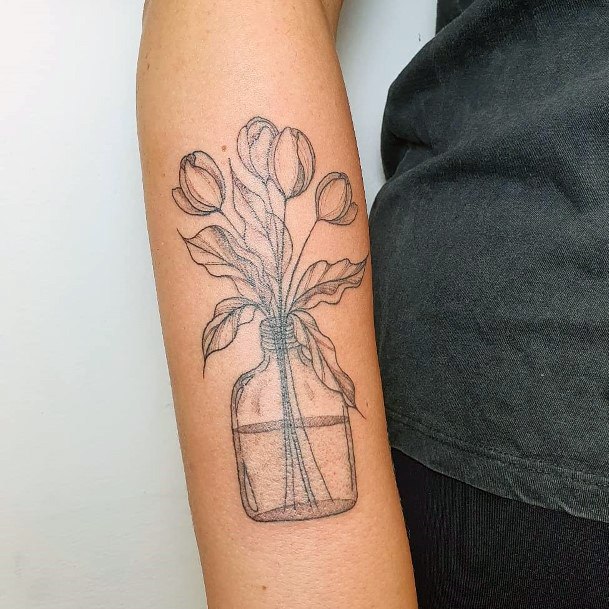
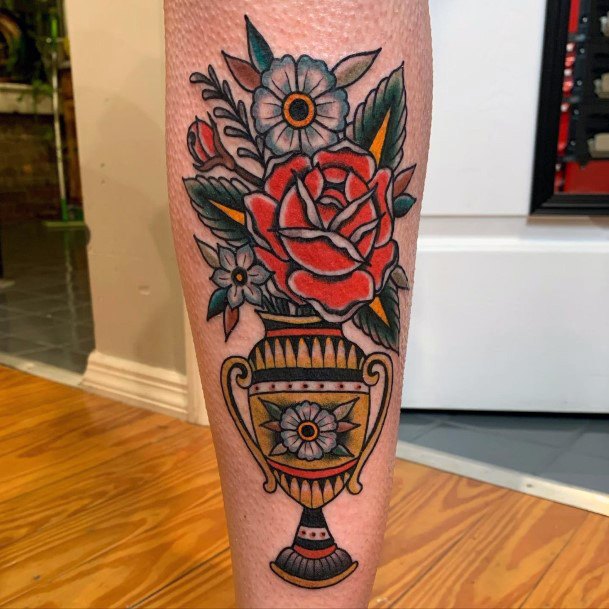
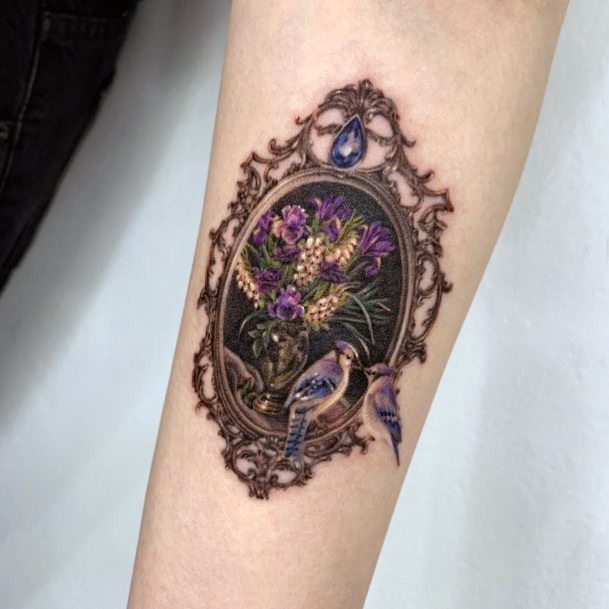

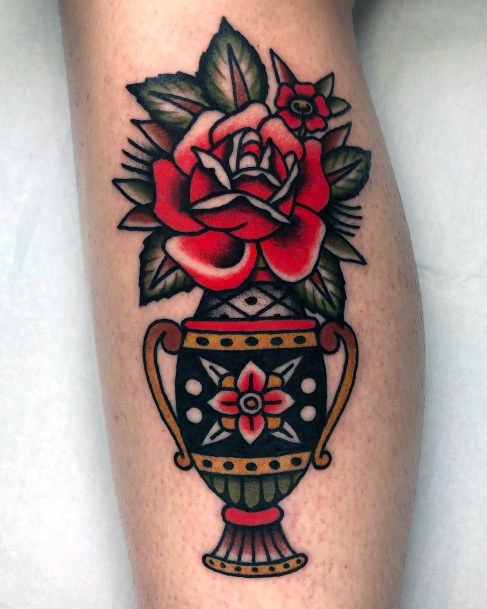




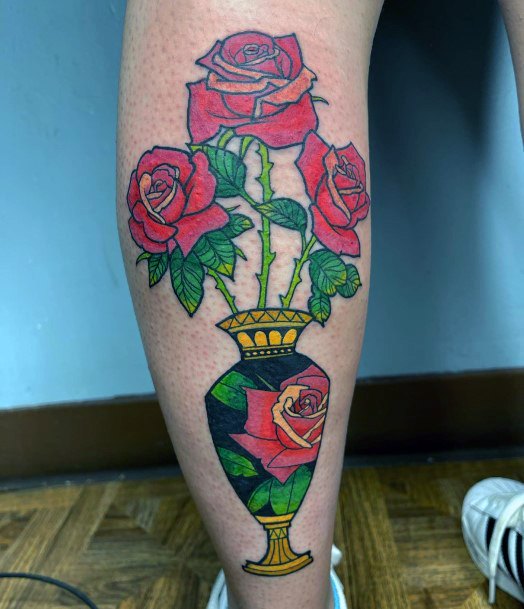
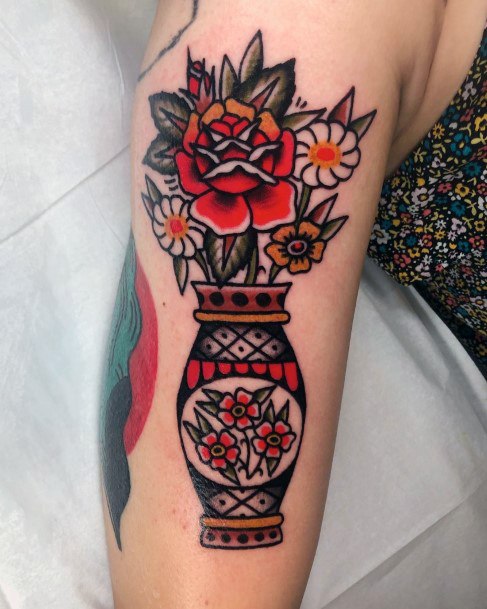
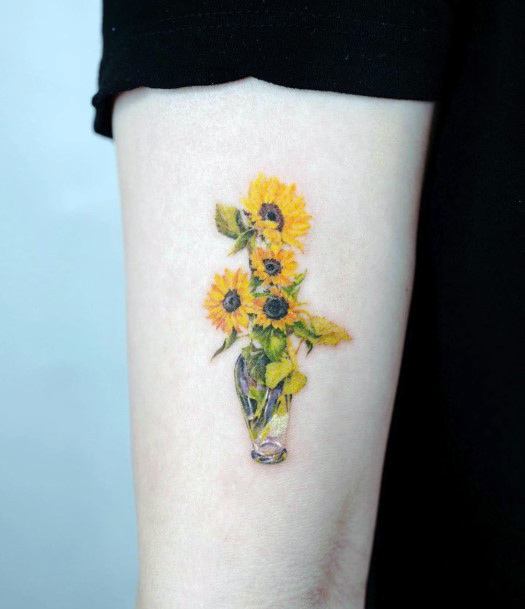
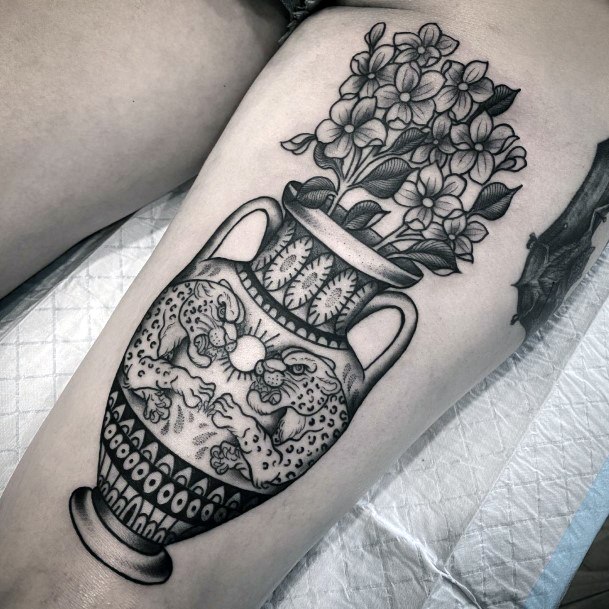
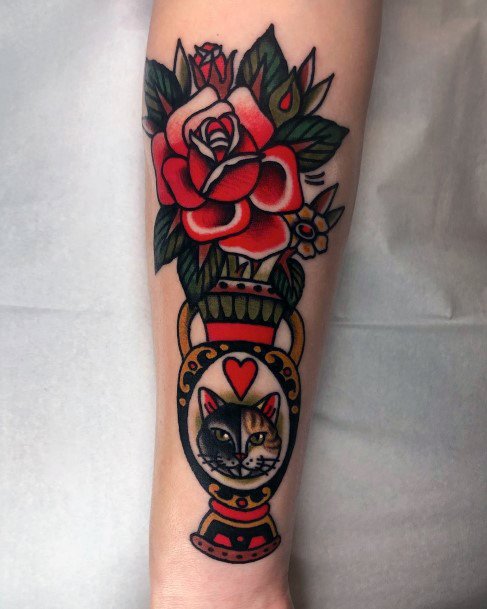
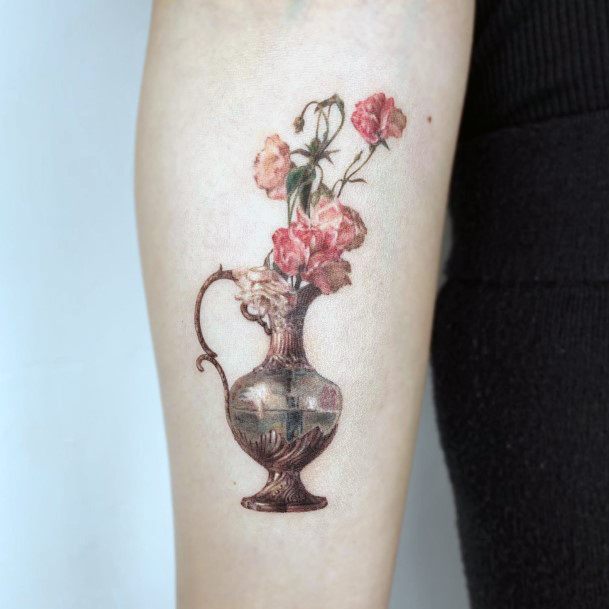
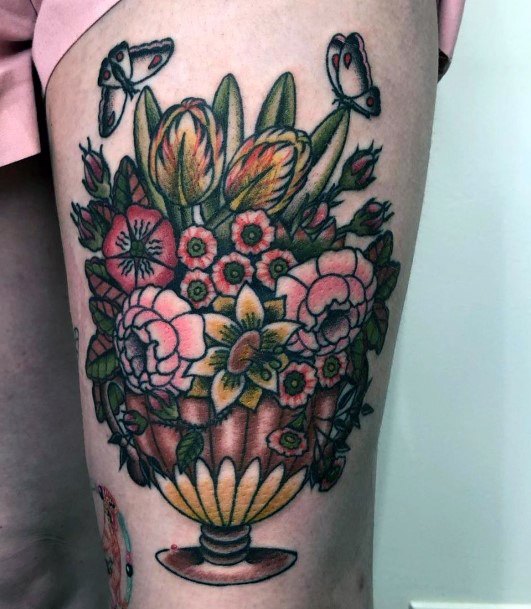
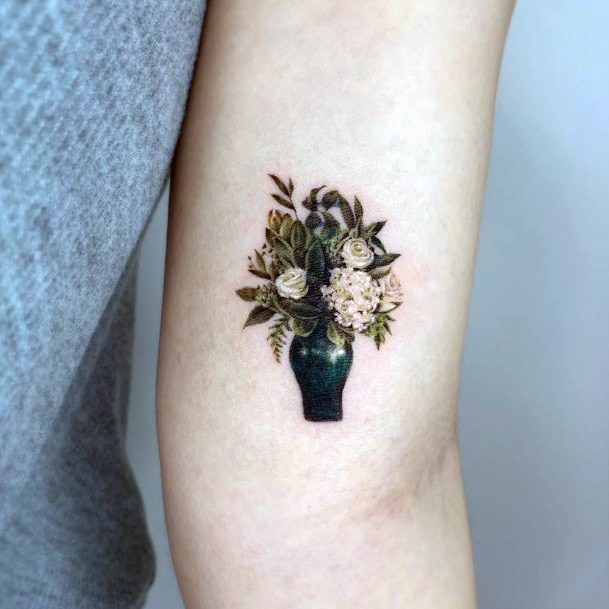
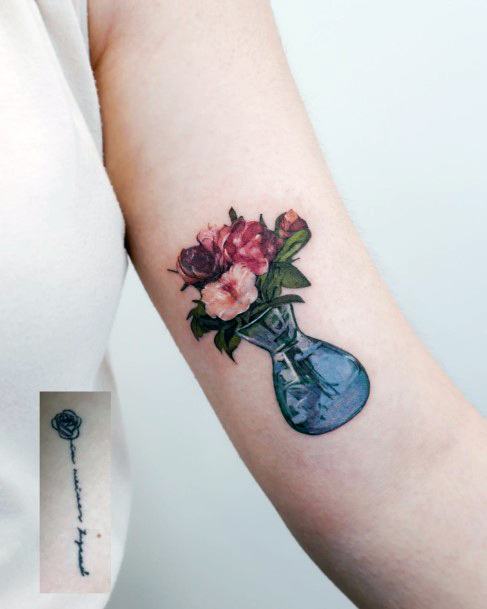
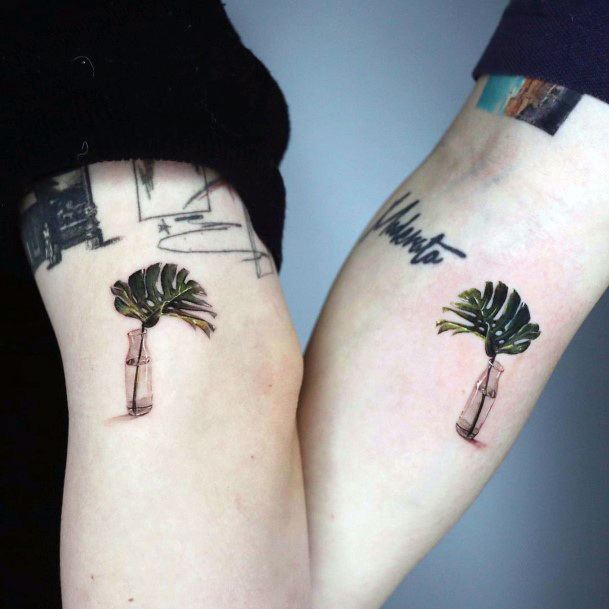
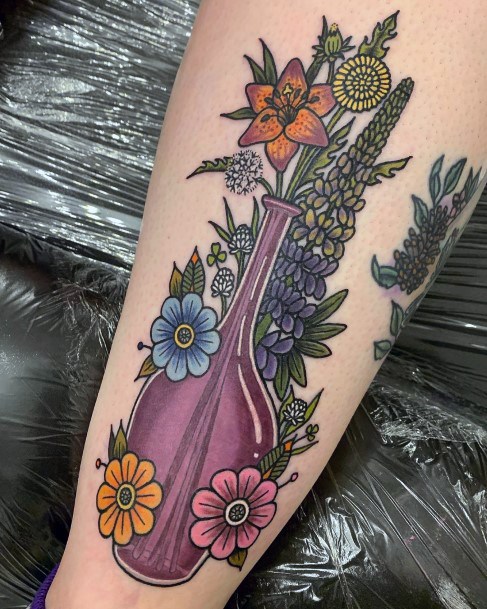

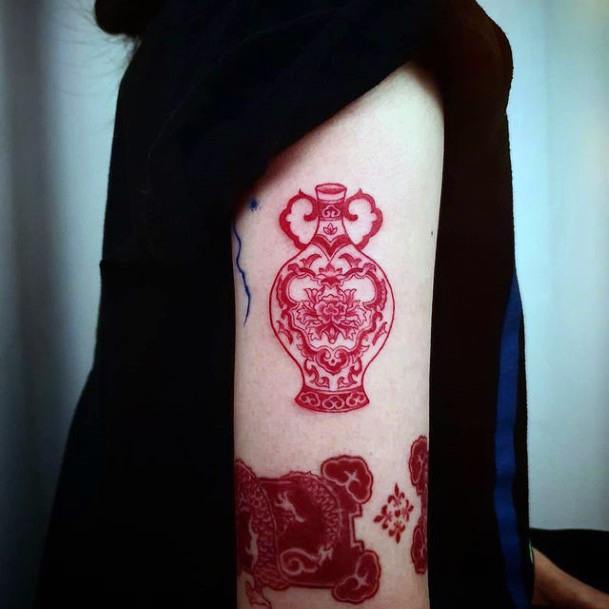
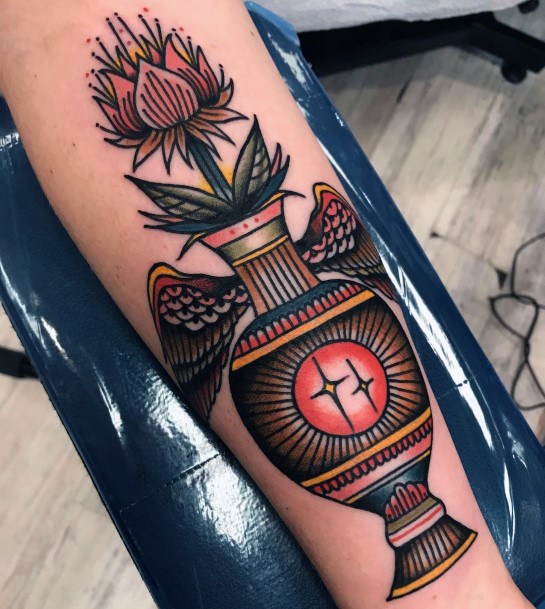
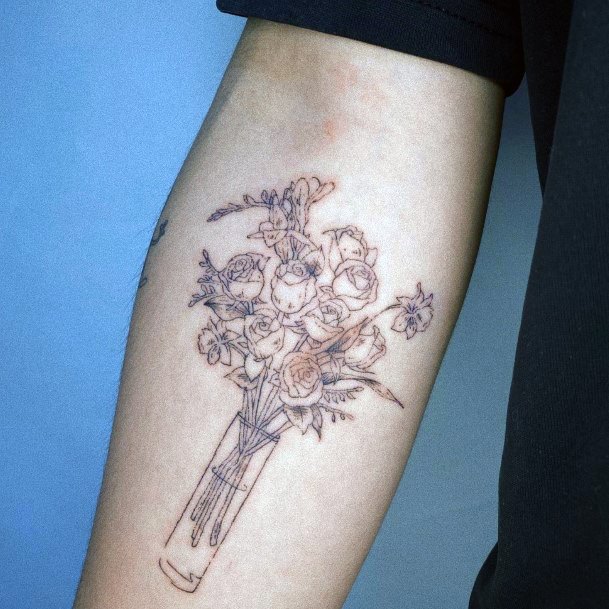
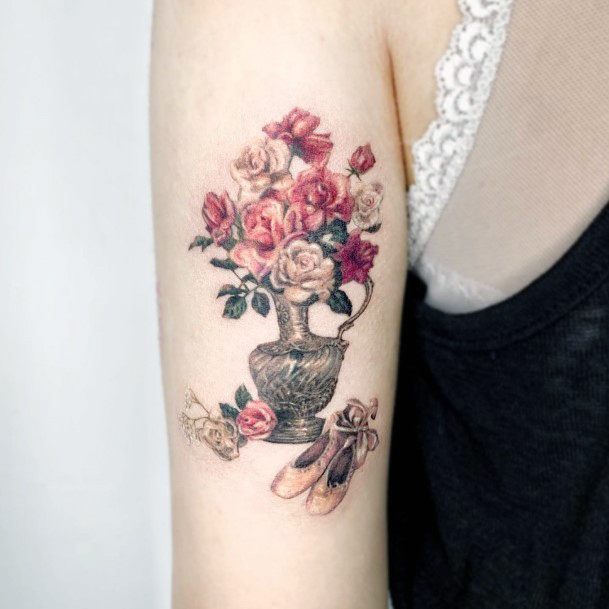
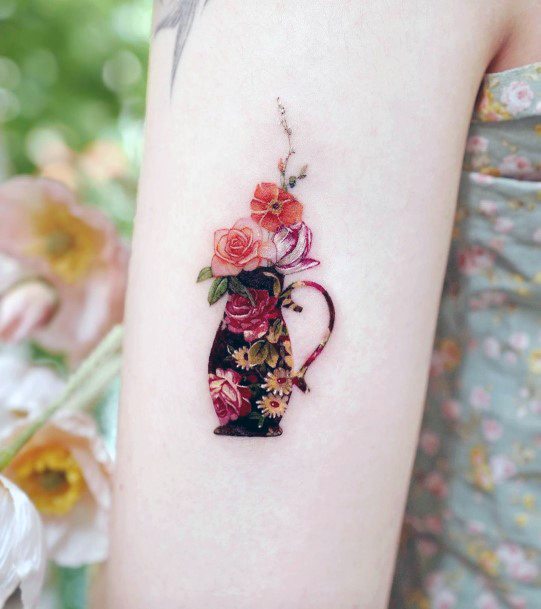
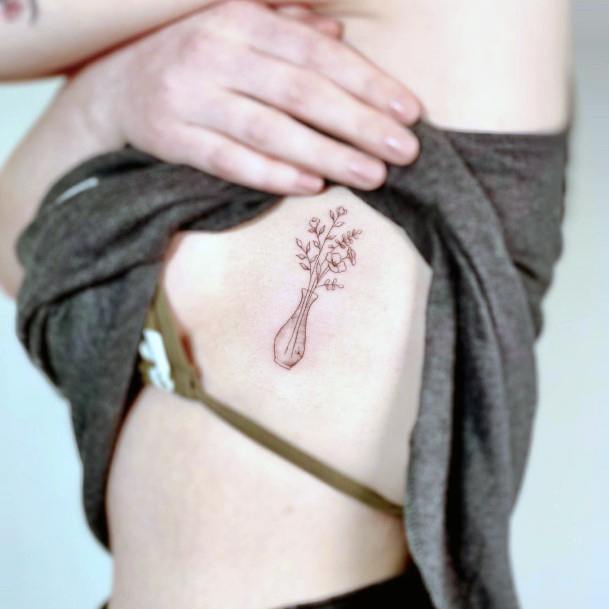
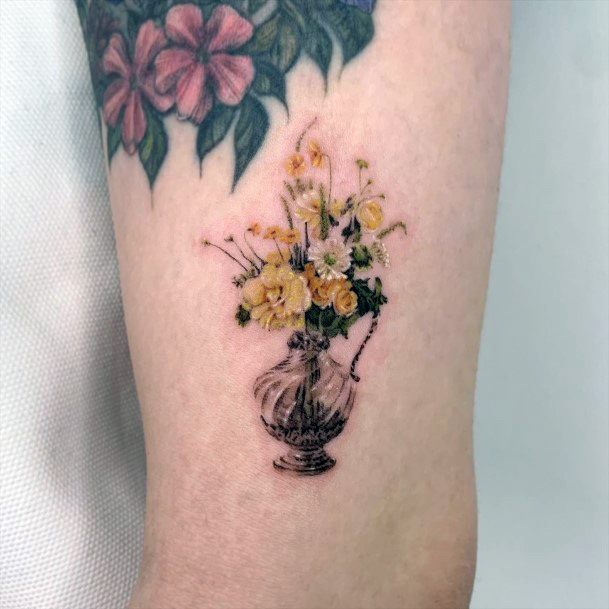



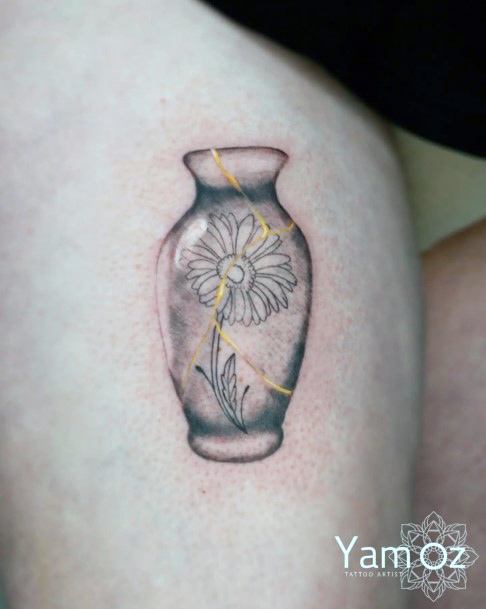
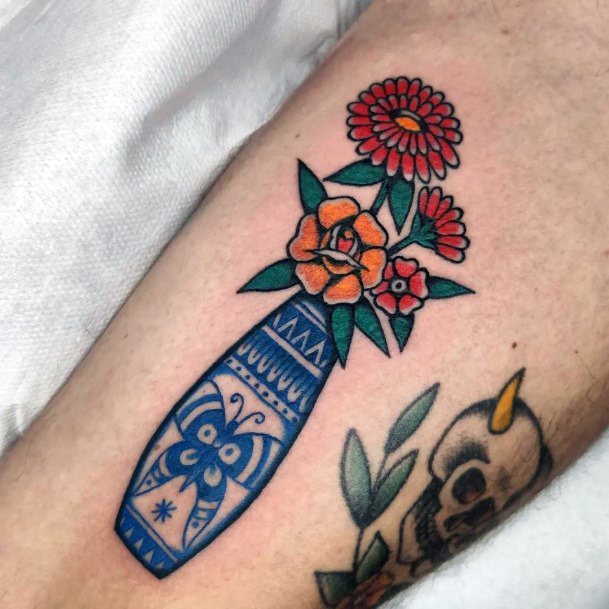
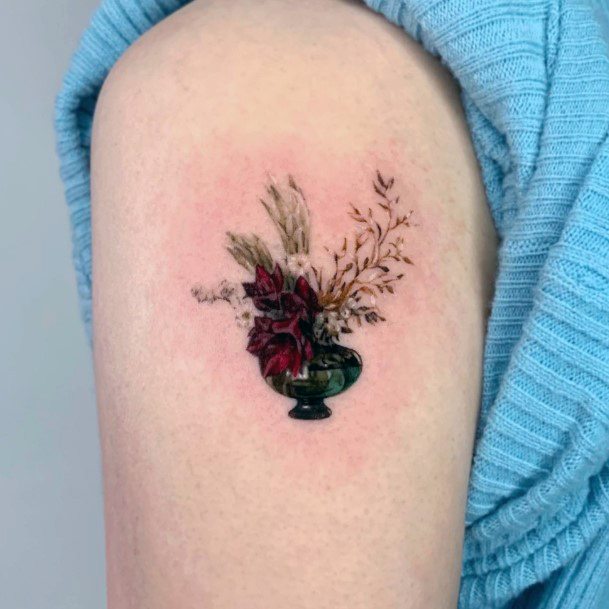


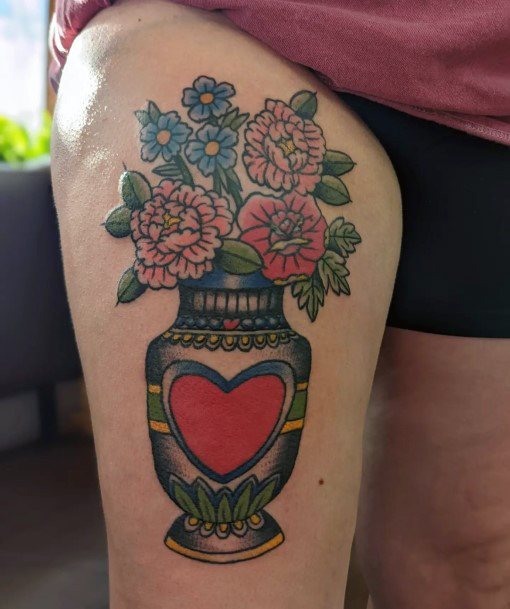
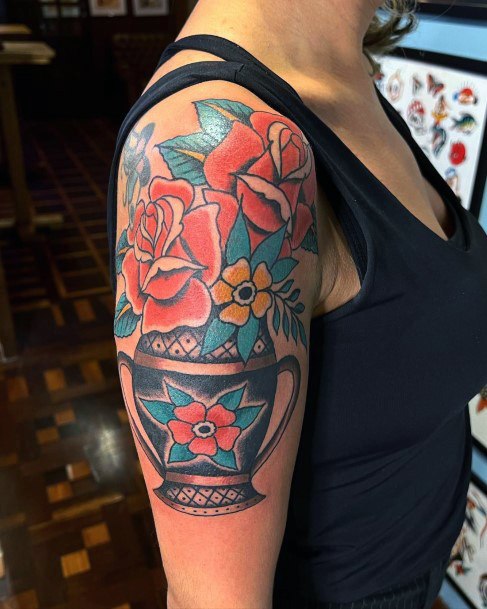
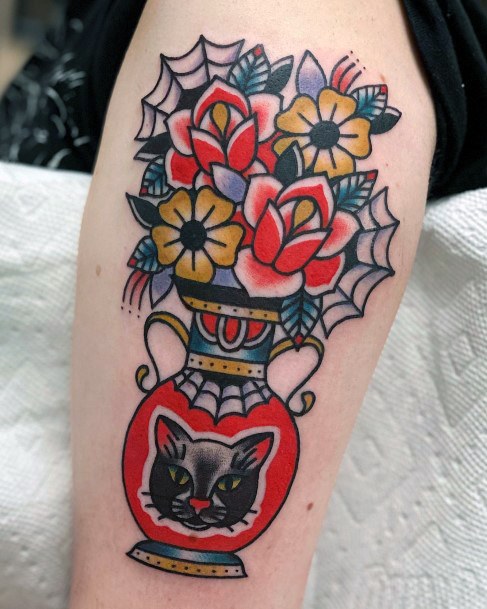
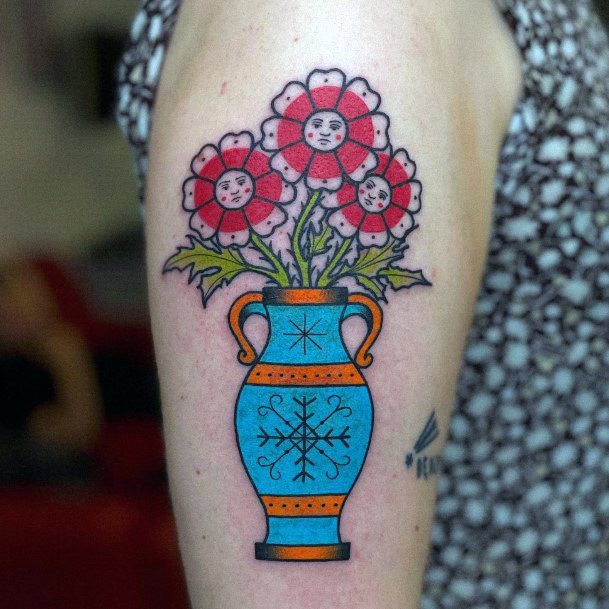

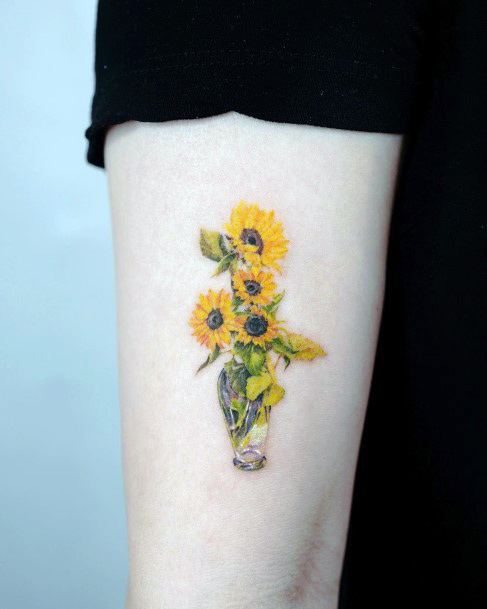


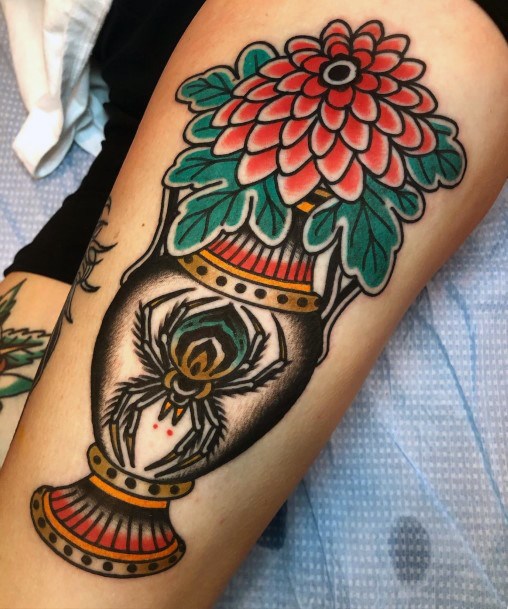
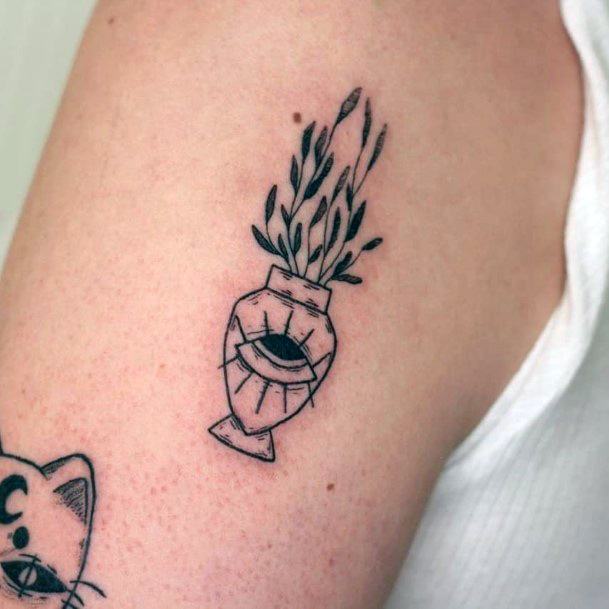
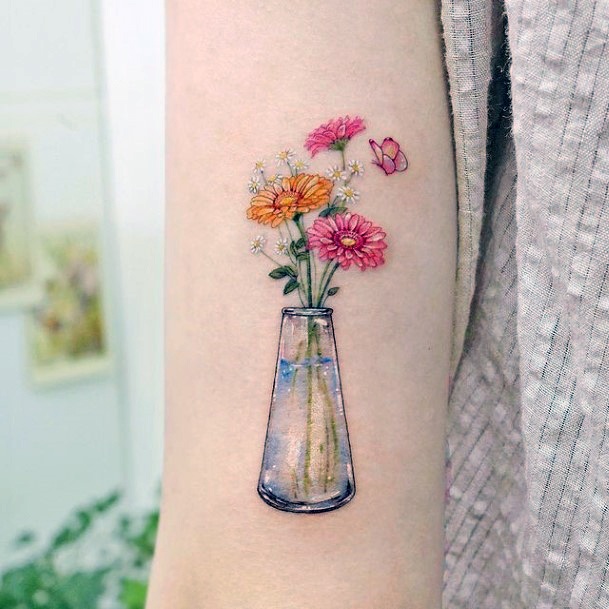
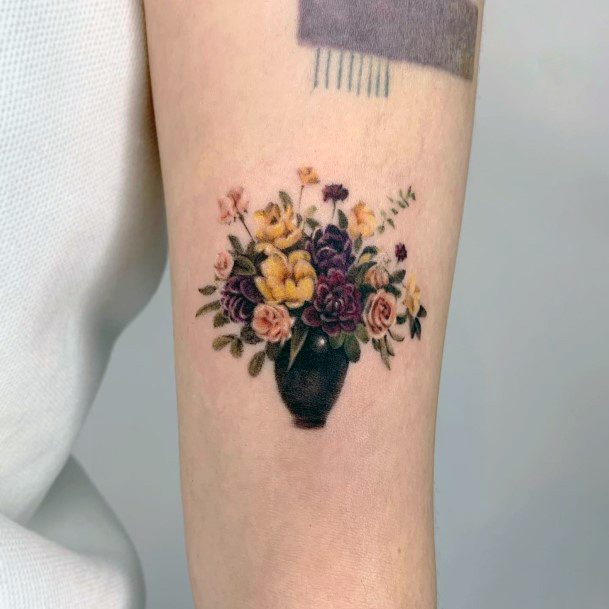
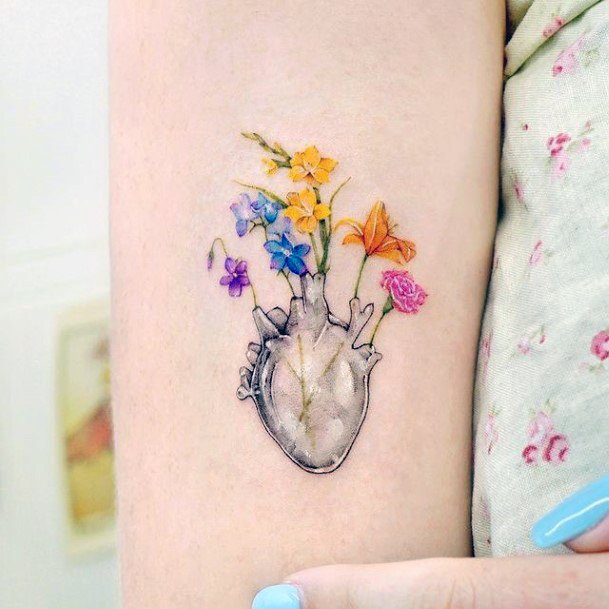



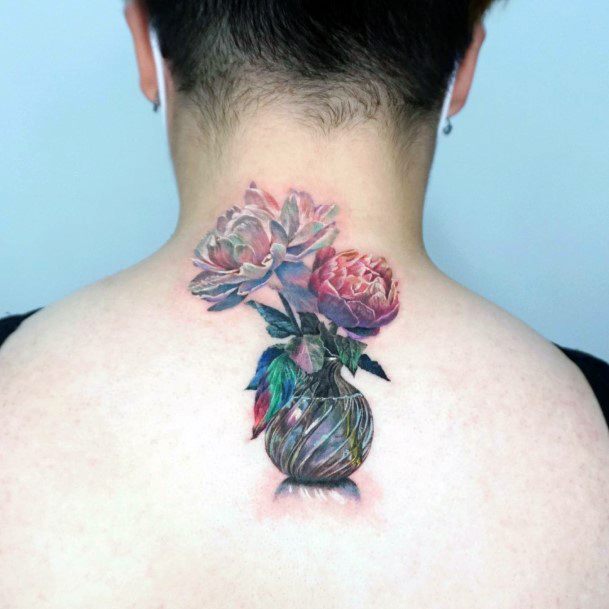
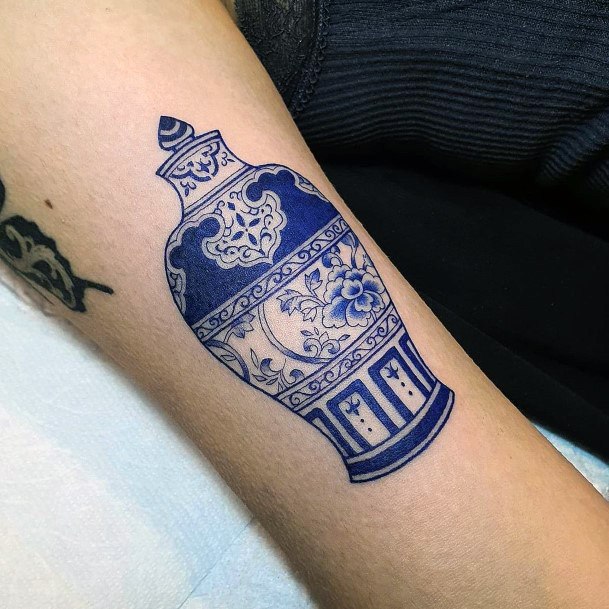
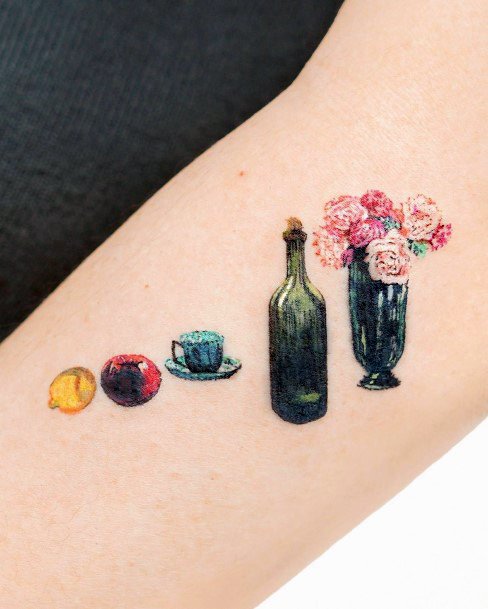
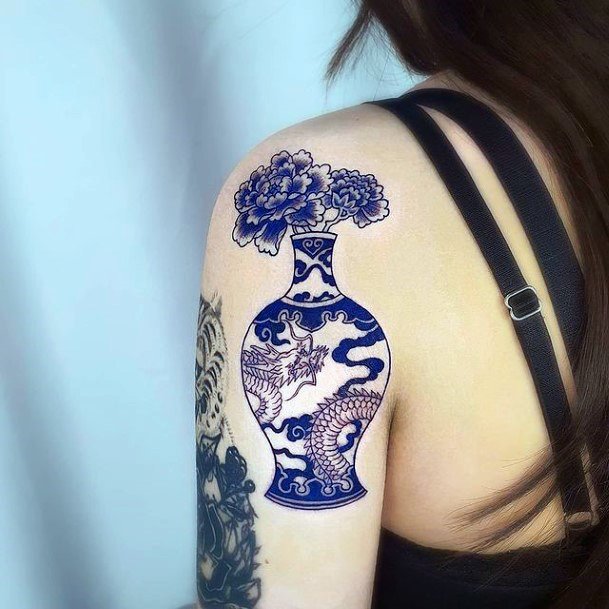

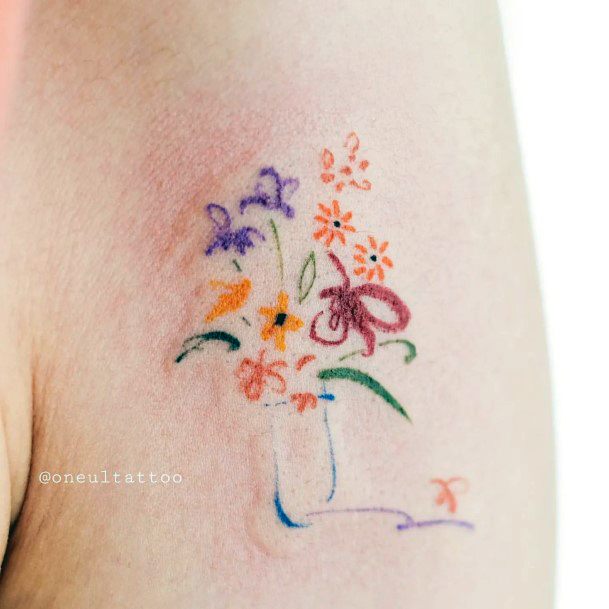
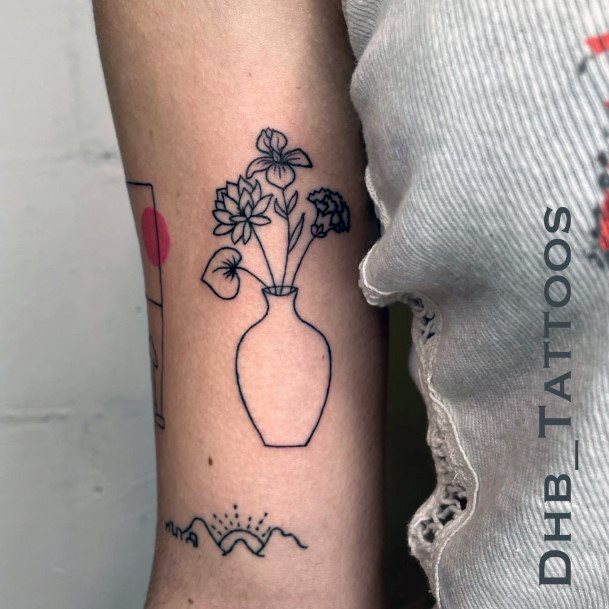

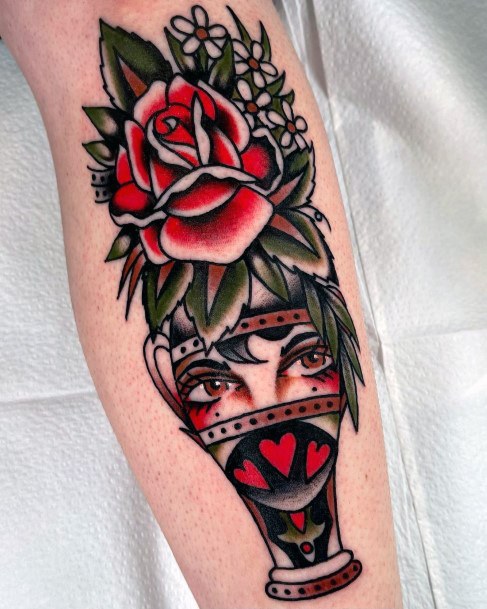




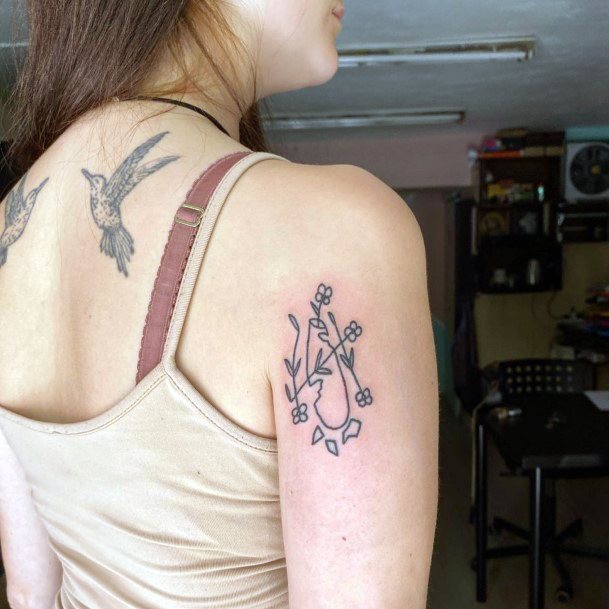

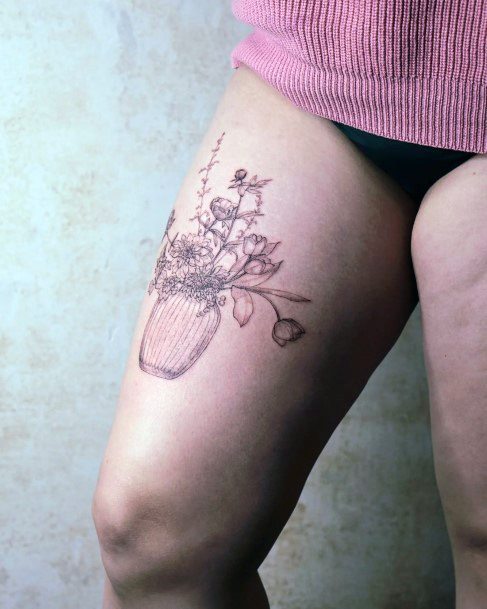
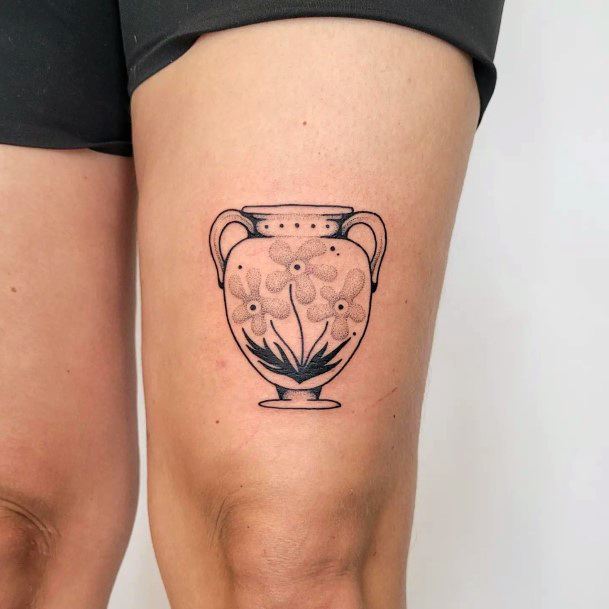
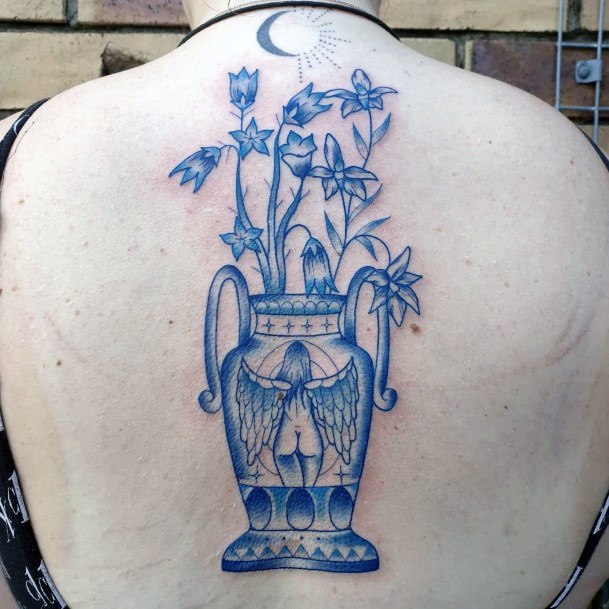

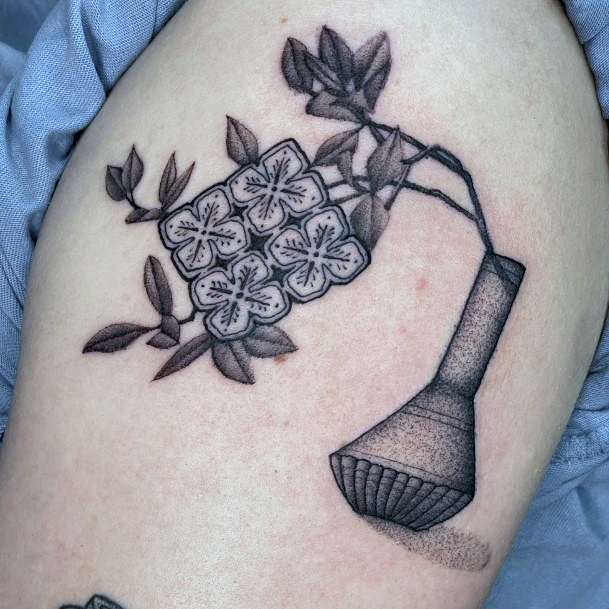
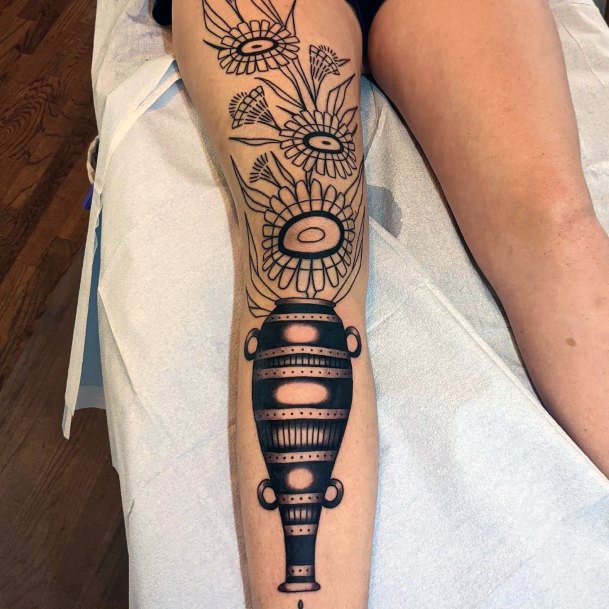

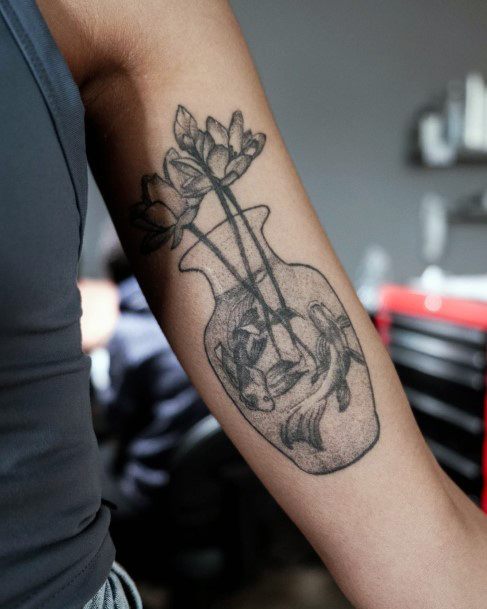
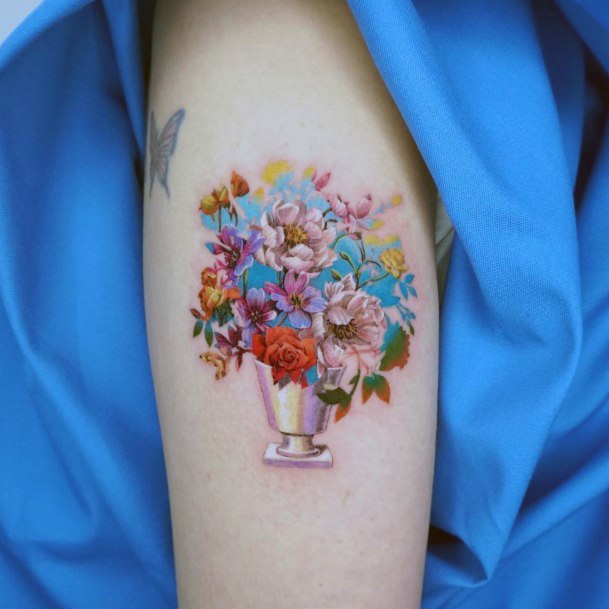
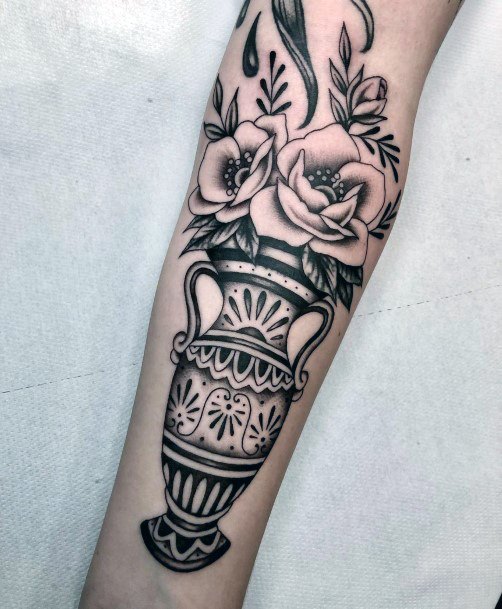

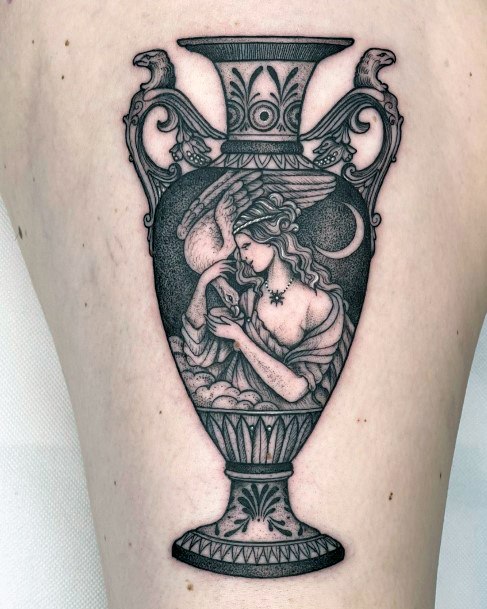
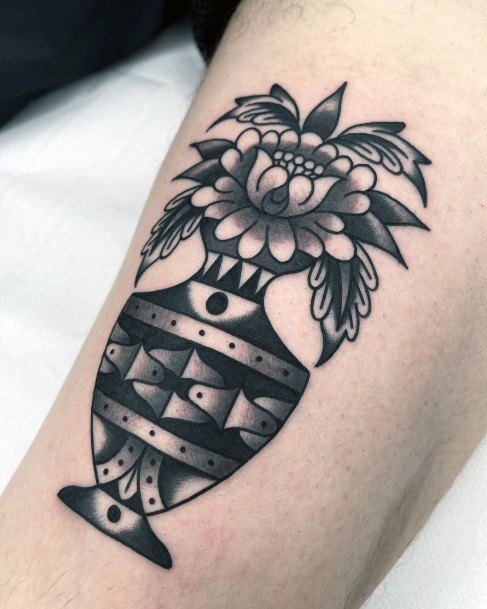

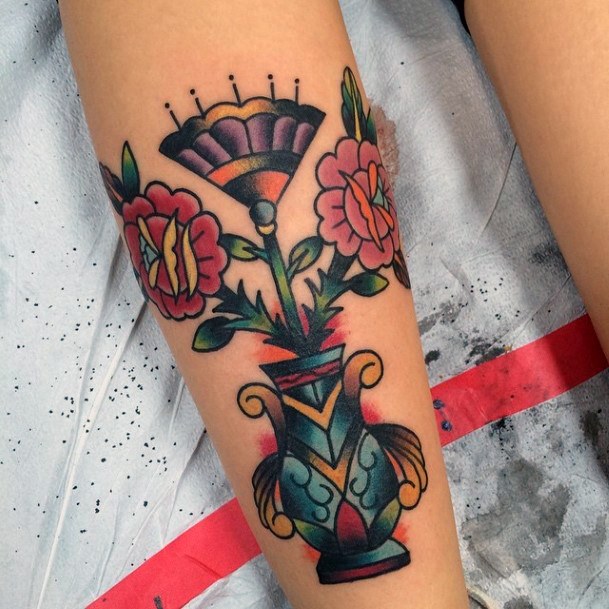

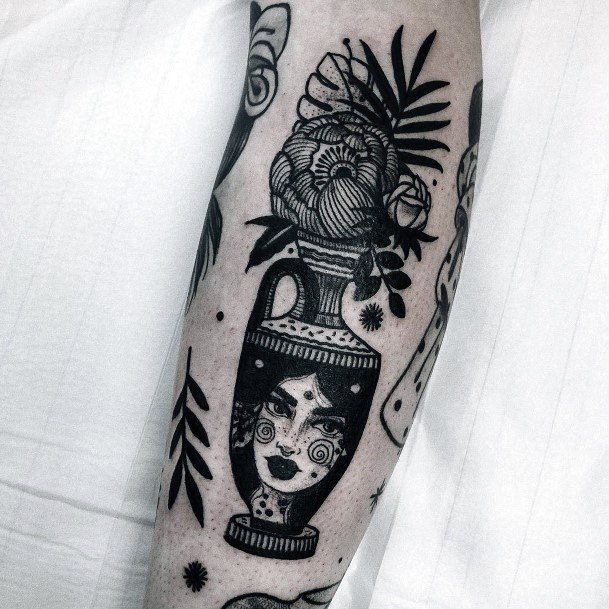
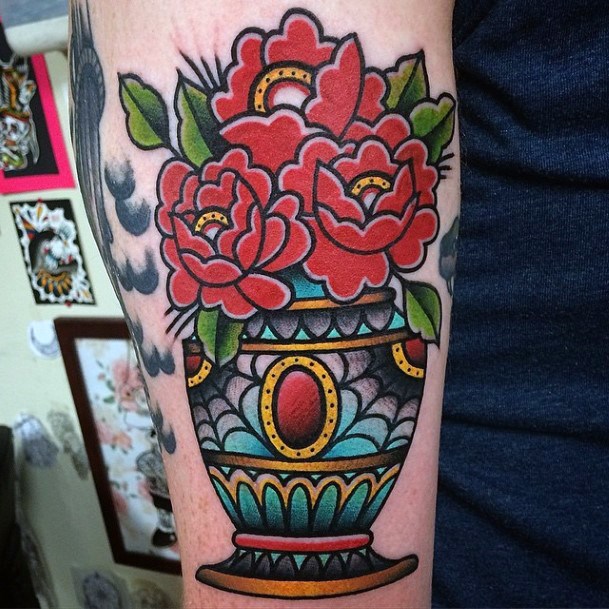
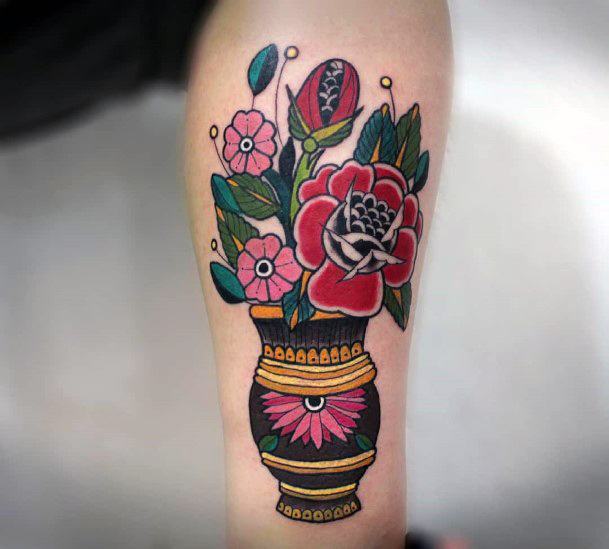
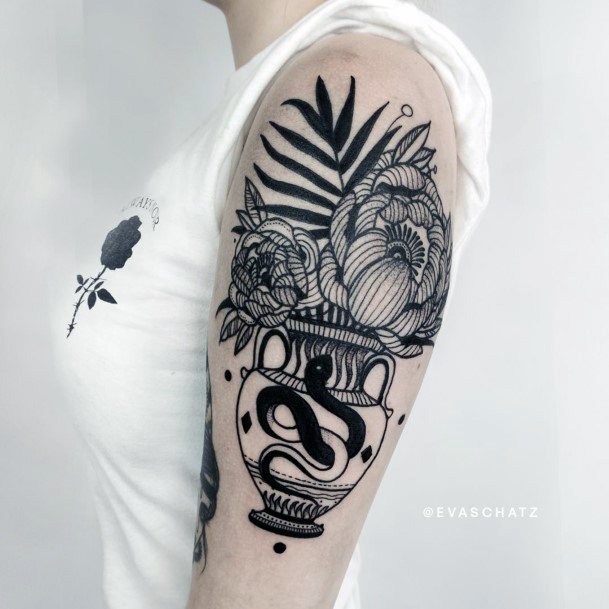



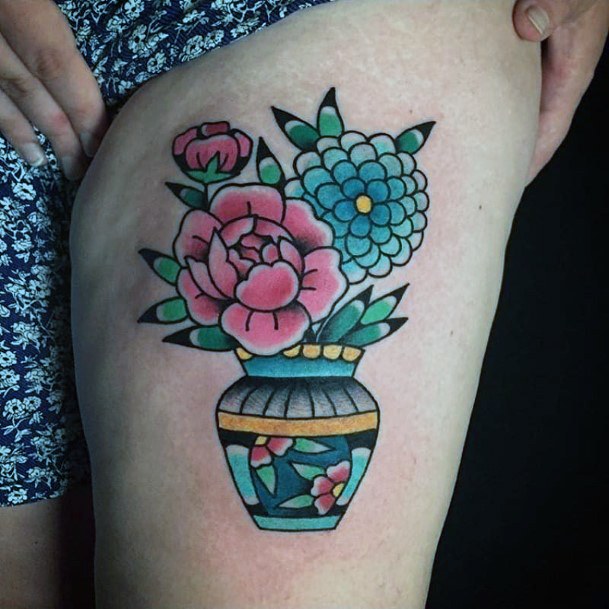

Flower Vase tattoo meanings and symbolism:
What do Flower Vase themed designs mean and symbolize?: In many cultures, a flower vase symbolizes beauty, grace, and abundance. They can also be seen as a sign of hospitality and love too. As well, flower vases are also used to represent fertility and abundance in some cultures. In ancient Greece, the flower vase was associated with Aphrodite, the goddess of love and beauty. The Romans also believed that flower vases held magical powers, as they were believed to help bring good luck and prosperity into one’s life.
The use of flower vases in art dates back to the Renaissance period when artists began incorporating them into their paintings as symbols of wealth and abundance. During this time, wealthy families would often give elaborate flower arrangements to their guests as a sign of hospitality and respect. This tradition continued into the Baroque period when more elaborate designs were created with intricate details such as gilding or enameling on the metalwork of the vessel itself.
In modern times, flower vases are still used as a way to show appreciation for someone or something special in our lives. They may be given as gifts for birthdays or anniversaries or simply displayed in our homes to add beauty to any room. While traditional designs remain popular today, contemporary designs have become increasingly popular due to their modern aesthetic appeal.
In Chinese culture, the flower vase is seen as an important symbol of good fortune and luck because it is believed that flowers will bring positive energy into one’s home or office space when placed in a vase. This belief is based on the Chinese proverb “Flowers bring joy even if they are not real” which conveys how powerful the presence of flowers can be even if they are artificial ones placed inside a decorative vessel like a flower vase.
In Japanese culture, there is another type of symbolism associated with flower vases called “kado” which means “the way of flowers” or “flower arrangement” that focuses on expressing emotions through arranging flowers in different ways inside an ornamental container like a flower vase. The traditional style kado typically consists of using seasonal plants arranged according to certain rules while emphasizing aesthetics such as color harmony, balance between elements within each arrangement etc., all intended to create an atmosphere conducive for contemplation and relaxation while admiring its beauty at close range..
In Native American culture too, there is much symbolism associated with floral arrangements placed within vessels such as pots or baskets made from natural materials like clay or wood that were used during ceremonies by tribal members who would offer prayers while carefully placing each stem inside its designated holder before presenting it either directly onto sacred alters or giving it away as gifts during special occasions like weddings or funerals..
There are also spiritual meanings linked with floral displays arranged within vessels such as in Hinduism where floral offerings placed upon altars dedicated to deities signify devotion towards those divine figures; Buddhism where lotus blooms arranged within small containers signify purity; Christianity where lilies placed inside chalices represent resurrection; Judaism where tulips symbolize hope; Islam where jasmine represents heavenly gardens; Sikhism where roses stand for truthfulness; Zoroastrianism where narcissus stands for immortality; Taoism where peonies symbolize wealth & honor, etc. All these beliefs demonstrate how deeply embedded this form of symbolism has become across many different cultures throughout history up until today!

